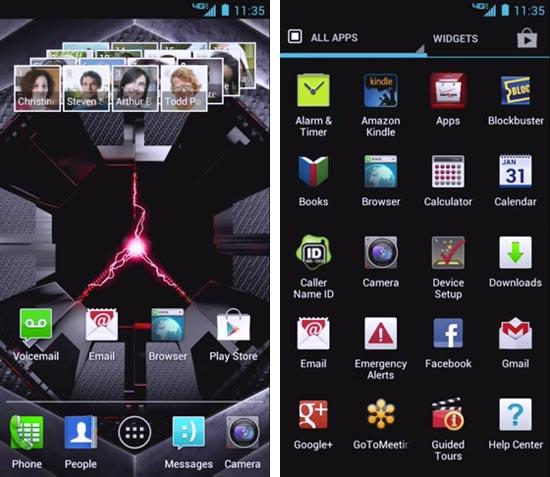
The One X by HTC is still coming soon here in the States, but that hasn't stopped the reviews from cropping up around the 'net. And while the hardware obviously took plenty of the stage, as it rightfully should, no one can forget the software. Because while top-tier hardware is fantastic, we all know that new hardware is already on the way (and even in the same model phone across the pond). But, HTC is betting a huge part of the farm on their refreshed HTC Sense, and with Sense 4, it looks like they may have finally figured it all out.
But, that’s not all. Just recently, we saw what looks to be official videos of what a Motorola RAZR (and RAZR MAXX) look like running Android 4.0, with Motorola’s own proprietary skin atop it. While in both cases, from HTC and Motorola, you can definitely tell that there is a proprietary user interface there, both versions have been toned down quite a bit in their own specific ways.
While you can look at an HTC One X and still say, “Yes, there’s Sense on that device,” the changes are noticeable once you start using it. If you’ve used a Sense-based device in the past, then you know that there’s plenty of alterations made to just about everything within the phone, courtesy of HTC’s skin. And while it’s great at the start, the experience usually buckles down under its own weight, and everything goes south. While Sense literally launched Android to new heights when it first came out, the experience has gradually become worse as the years went on.
And, let’s face it, not many people were a fan of MOTOBLUR when it first launched, and that sentiment didn’t change too quickly (some might say it still hasn’t).
But things look to be changing for the better, and it’s definitely good timing. There’s no doubt in my mind that Sense needed a big change, and thankfully HTC finally realized that on their own end. The same can be said for Motoblur, or whatever Motorola doesn’t want to call it anymore. Obviously skins aren’t going anywhere anytime soon, but when they start to weaken the overall experience, changes need to be made.
We’re still basing this off the videos we saw earlier today of the Android 4.0-based operating system with Motorola’s skin atop, but it looks like Motorola has started listening to the crowds as well. Sure, things could change at some point before Motorola finally updates these devices, but for the moment it looks like they’re toning back BLUR (or not BLUR) as much as they can, but still making sure that people know you’ve got a Motorola handset in your hand, just by looking at the software.
And there’s nothing wrong with that. In fact, that’s exactly what they should be aiming for. Yes, you want to be able to tell your device apart from another based on hardware, but if you can’t, the software is the next step. But just being able to tell it apart from another piece of software is half the battle. It needs to be a worthwhile experience, and not just out of the box. But for the next two years (or for the length of your contract, or until you just decide to get a new phone). It has to last, while also being different.
And now it looks like the manufacturers are starting to figure that out. Now that we know HTC can make the necessary changes for Sense to stay relevant and user-friendly in 2012, and with Motorola seemingly making the same moves, it will be interesting to see how Samsung approaches their next version of TouchWiz on the successor to the Galaxy S II. Will it be loaded? Or will it be a trimmed, more versatile version of its former self?
Only time will tell. But, one thing is for sure: I’m excited.